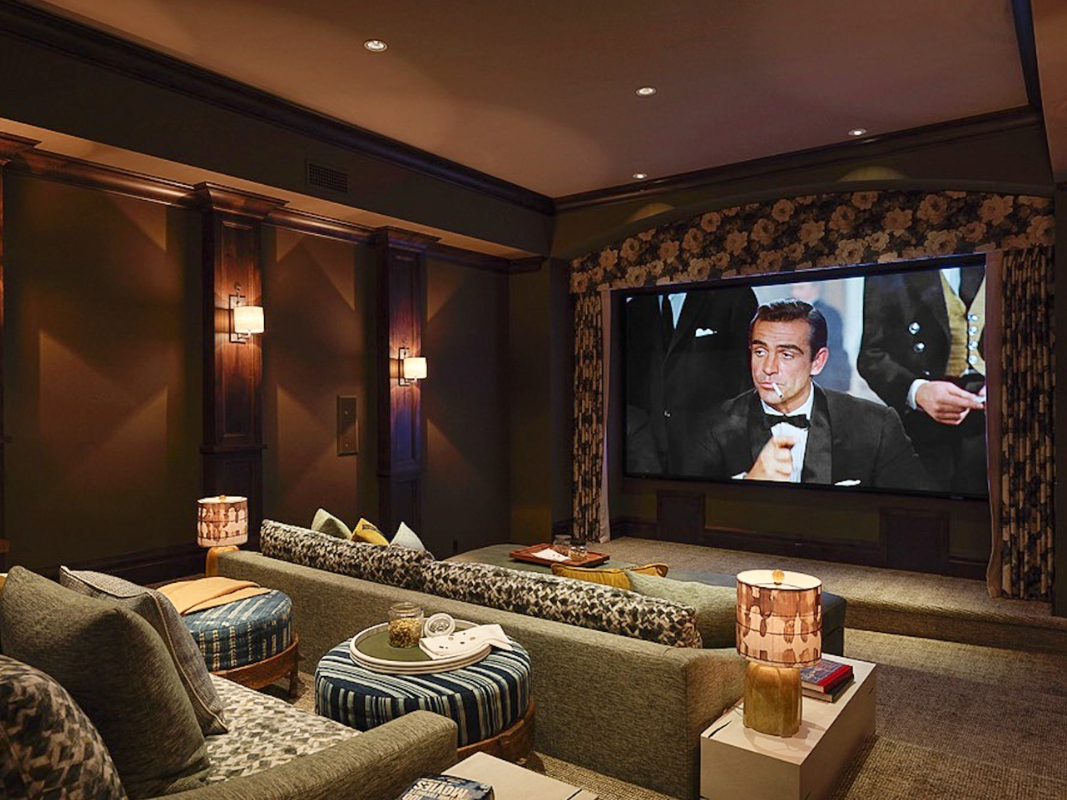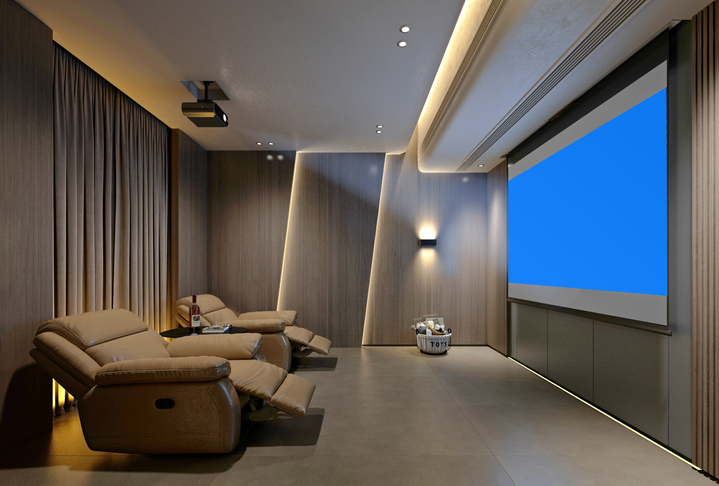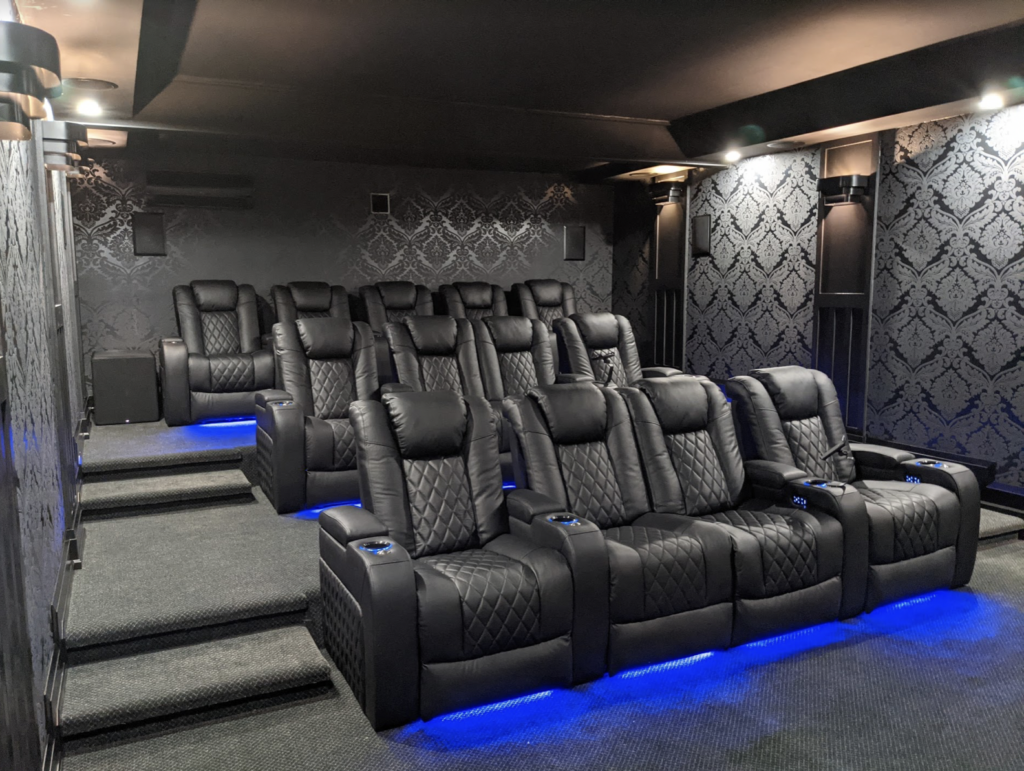The Comprehensive Guide to Home Theater Installation Tampa Homeowners Trust
The Comprehensive Guide to Home Theater Installation Tampa Homeowners Trust
Blog Article
Home Theater 101: Whatever You Required to Know for a Cinematic Experience in your home
Developing a home cinema that equals the motion picture experience of a commercial theater includes mindful factor to consider of numerous parts, including display choice, audio systems, and space format. Each element plays a crucial function in attaining the desired ambiance and capability. Whether you are considering the excellent screen size or the intricacies of border sound, understanding these basics is necessary. As we discover these vital components, it becomes noticeable that the options made can considerably impact your total viewing experience, leaving one to ponder exactly how these decisions will form your individual cinema.
Selecting the Right Screen
When establishing up a home theater, choosing the appropriate display can make or break the seeing experience - home theater design tampa. The screen serves as the centerpiece of your arrangement, affecting picture top quality, seeing angles, and general aesthetic. Key aspects to think about include screen type, dimension, and resolution
First, identify the proper screen dimension based on your space measurements and seating distance. Next off, select between various screen types, such as fixed-frame, motorized, or retracting displays, each offering distinctive benefits.
Resolution is an additional vital element. For a really immersive experience, take into consideration a screen created for 4K or perhaps 8K content, making sure sharpness and quality. In addition, think about the screen's gain, which impacts illumination and comparison; a greater gain can boost illumination in well-lit areas, while a reduced gain might be much more ideal for darker settings.
Choosing Sound Equipment
Audio tools is an important part of any type of home movie theater system, significantly enhancing the general viewing experience. The choice of audio equipment can establish the deepness, quality, and immersion of noise, important for producing a cinematic environment.
When choosing audio devices, take into consideration a border audio system, which generally consists of a receiver, numerous audio speakers, and a speaker. A 5.1 or 7.1 channel system is advised, where the initial number represents the audio speakers and the 2nd the subwoofer, giving an immersive soundscape. The receiver is the heart of the system, managing audio and video signals, and need to sustain modern-day formats like Dolby Atmos for a boosted spatial experience.
Quality audio speakers are necessary; look for versions that offer a well balanced sound profile with excellent bass reaction. Floor-standing speakers can generate richer audio, while shelf options conserve room. Furthermore, take into consideration cordless options for convenience of installment, although wired systems frequently provide superior performance.

Optimum Seating Plans
Developing a suitable home movie theater experience hinges significantly on ideal seating setups. The plan of seats plays a vital role in both comfort and viewing high quality, directly influencing the general cinematic experience.
First, consider the display dimension and seeing distance. A typical standard is to place seats at a distance roughly 1.5 to 2.5 times the diagonal dimension of the display. This ensures an immersive experience without stressing the eyes.
Next, elevation is vital. The back rows need to be greater than the front to prevent blockages if your seating is in a tiered layout. For flat seating, make sure that the front row is not also close to the screen, and that every person has a clear view.
Moreover, think about the arrangement in terms of social characteristics. Group seats can boost the communal experience, while specific seats may be favored for personal watching.

Last but not least, focus on comfort with ergonomic seats that sustains extensive viewing durations. Incorporating recliners or cushioned seats can substantially enhance the experience, making the home movie theater a recommended location for both home entertainment and relaxation.
Lighting and Ambiance
Efficient illumination and ambiance are essential parts of a well-designed home cinema, as they substantially influence the viewing experience. The ideal illumination can improve the motion picture feeling, while inadequate choices can take away look what i found from it. For optimum results, consider a split illumination strategy that includes ambient, task, and accent illumination.
Ambient lighting supplies general illumination, guaranteeing that the room is not completely dark, which can strain the eyes. Dimmer switches are very suggested, permitting for adjustments based upon the material being checked out. Task lights, such as wall sconces or floor lamps, supplies useful illumination for activities like analysis or browsing the space without disrupting the general atmosphere.
Accent lighting can be utilized to highlight architectural attributes or create focal points, adding depth and rate of interest to the room. LED strip lights behind screens or along racks can provide a refined radiance that boosts the visual experience without overwhelming the customer.

Wiring and Installation Tips
A tactical circuitry setup is crucial for accomplishing ideal performance in your home theater system. Proper wiring not just ensures top quality audio and video signals but also enhances the overall aesthetic of your space. Begin by dig this mapping out your design, determining where each component will certainly be put, including your display, speakers, and receiver.
When selecting cables, prioritize top quality, appropriately assessed circuitry to reduce signal loss. HDMI cable televisions must be utilized for video clip links, while speaker cord should match the specs of your speakers and amplifier. Choose in-wall ranked wires to abide by safety and security standards and keep a clean appearance.

Verdict
In recap, creating a phenomenal home movie theater experience requires careful factor to consider of various aspects, consisting of display option, audio tools, seating setups, illumination, and wiring. By prioritizing these elements, a cinematic environment can be efficiently reproduced, allowing for immersive checking out experiences that equal standard movie theater setups.
Developing a home theater that measures up to the cinematic experience of a business theater involves careful factor to consider of several elements, consisting of screen choice, audio systems, and space design.When establishing up a home theater, picking the appropriate display can make or break check out this site the checking out experience. Next, choose between different screen types, such as fixed-frame, mechanized, or retracting screens, each offering unique advantages. For a truly immersive experience, consider a screen developed for 4K or even 8K material, ensuring sharpness and quality.In recap, creating a remarkable home cinema experience requires cautious factor to consider of various components, consisting of screen option, audio tools, seating plans, illumination, and electrical wiring.
Report this page